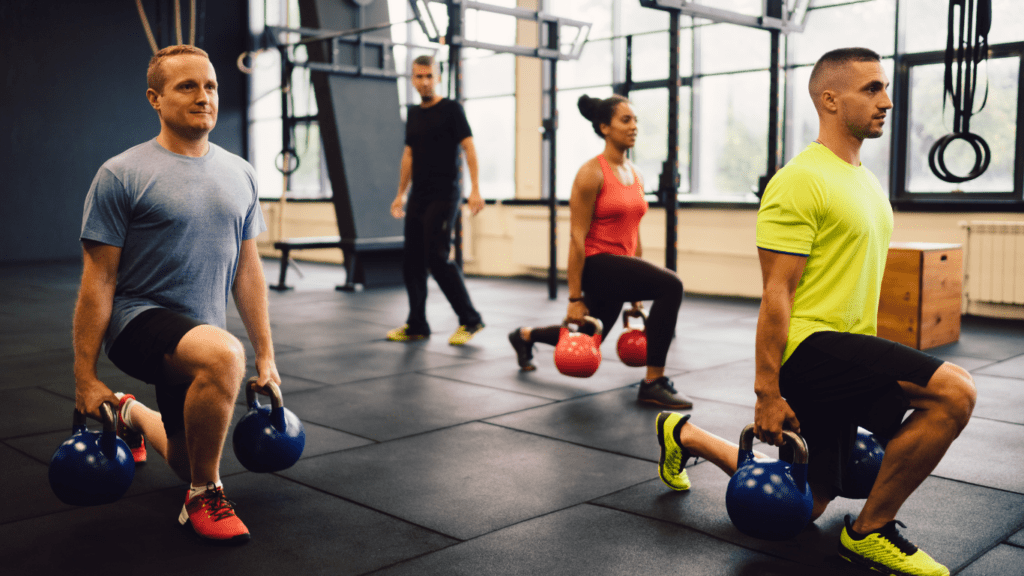I’ve always been fascinated by how the body moves and adapts, especially when it comes to athletic performance. One key factor that often gets overlooked is flexibility. It’s not just about touching your toes or doing a perfect split—flexibility plays a critical role in how efficiently we move, how well we perform, and even how we recover.
Stretching isn’t just a warm-up routine; it’s a science-backed practice that directly impacts strength, endurance, and injury prevention. Whether you’re a seasoned athlete or just starting your fitness journey, understanding the connection between flexibility and performance can transform the way you train. Let’s dive into why stretching matters and how it can elevate your game.
Understanding Flexibility And Its Importance
Flexibility refers to the range of motion (ROM) available in a joint or group of joints. Factors such as:
- muscle elasticity
- ligament length
- joint structure
influence flexibility. Maintaining or improving flexibility impacts how the body performs complex and repetitive movements during athletic activities.
Improved flexibility enhances biomechanical efficiency, reducing the energy required for movement. For example, runners with optimal hip mobility experience less strain on their lower back and knees, improving endurance. Flexibility also aids in proper posture, which minimizes unnecessary stress on muscles.
Injury prevention is one of flexibility’s key benefits. Flexible joints and muscles are less prone to strains during physical activities. For instance, a flexible hamstring experiences less risk of tearing during sprints. Additionally, increased ROM supports adaptability in unexpected positions, reducing the likelihood of acute injuries like sprains.
Optimal flexibility supports muscle strength and stability. Without adequate ROM, muscles may compensate incorrectly, leading to imbalances. Balanced flexibility ensures load distribution across joints, contributing to overall strength and reducing overuse injuries. An example is weightlifters maintaining shoulder flexibility to prevent rotator cuff strain.
Understanding flexibility extends beyond physical benefits. Consistent stretching routines improve neuromuscular connection, enhancing motor control. This connection is crucial for athletes who rely on precise, coordinated movements like gymnasts and dancers.
The Science Behind Stretching
Stretching is rooted in biomechanics and physiology, with impactful effects on muscle function, joint mobility, and overall athletic performance. Its mechanisms reveal how strategic practices enhance flexibility while supporting injury prevention and movement efficiency.
Types Of Stretching

- Stretching methods vary based on the type, duration, and application.
- Static stretching involves holding a position for 15-60 seconds to elongate muscles, commonly used post-workout.
- Dynamic stretching involves controlled movements that take joints through their full range of motion, recommended during warm-ups.
- Proprioceptive Neuromuscular Facilitation (PNF) alternates between contraction and relaxation to improve flexibility.
- Each type serves specific performance goals, from boosting circulation to preparing muscles for activity.
How Stretching Impacts Muscle Fibers
Stretching impacts muscle fibers by lengthening the sarcomeres, the smallest functional units of muscle tissue. This elongation improves flexibility and reduces muscular tension. For example, prolonged static stretching enhances muscle compliance, leading to reduced stiffness during movements. Dynamic stretches stimulate intramuscular blood flow, delivering oxygen and nutrients while removing waste products, which optimizes muscle function. These effects contribute to smoother, more efficient motion patterns.
The Role Of Stretching In Injury Prevention
Stretching contributes to reduced injury risks by increasing muscle elasticity and joint range of motion. Flexible muscles absorb impacts and adapt to extended positions, minimizing strains. For instance, dynamic stretching before physical activity primes muscles by increasing temperature and pliability, reducing the chance of acute injuries. Regular stretching also reduces muscular imbalances, preventing overuse injuries caused by uneven stress across joints. This balance supports long-term athletic durability.
Stretching And Athletic Performance
Stretching plays a critical role in athletic performance by enhancing physical capabilities, supporting recovery, and improving mental focus during training and competition. Its benefits extend across various facets of strength, endurance, recovery, and psychological well-being.
Benefits For Strength And Endurance
Stretching contributes to strength by promoting optimal muscle function and balance. When muscles operate within improved ranges of motion, they contract more efficiently, allowing for greater force production. For instance, dynamic stretching before strength exercises improves neuromuscular readiness, increasing the activation of motor units in muscles.
Endurance improves with stretching due to enhanced blood flow and oxygen delivery. Pre-activity stretches, such as dynamic stretches, reduce muscle stiffness, resulting in smoother, energy-efficient movements during prolonged physical efforts. Stretching also delays the onset of muscle fatigue by lowering muscular tension, ensuring consistent performance over time.
Enhancing Recovery Through Stretching
Stretching accelerates recovery after intense physical activity by reducing muscle soreness and stiffness. Post-activity static stretching promotes blood circulation, which aids in clearing metabolic waste products like lactic acid. This improved circulation delivers essential nutrients to muscles, speeding up tissue repair.
Stretching also alleviates delayed onset muscle soreness (DOMS) when incorporated as part of post-workout cooldowns. Gentle stretches prevent muscles from becoming tight, reducing discomfort and helping maintain flexibility between training sessions. Effective recovery directly impacts athletic performance by preserving mobility and preventing overuse injuries.
Mental Benefits Of Flexibility Exercises
Flexibility exercises improve mental focus and relaxation, positively influencing athletic performance. Stretching activates the parasympathetic nervous system, lowering stress levels and heart rate, especially during static or yoga-based stretches. Relaxed muscles lead to better coordination and concentration during competitions.
Mental clarity received through consistent flexibility training enhances body awareness. This heightened mind-muscle connection helps athletes execute precise movements required in gymnastics, dance, and martial arts. Additionally, the meditative aspect of stretching aids in managing performance anxiety, creating a calm, focused mindset.



 Injury Prevention & Recovery Specialist
Injury Prevention & Recovery Specialist
